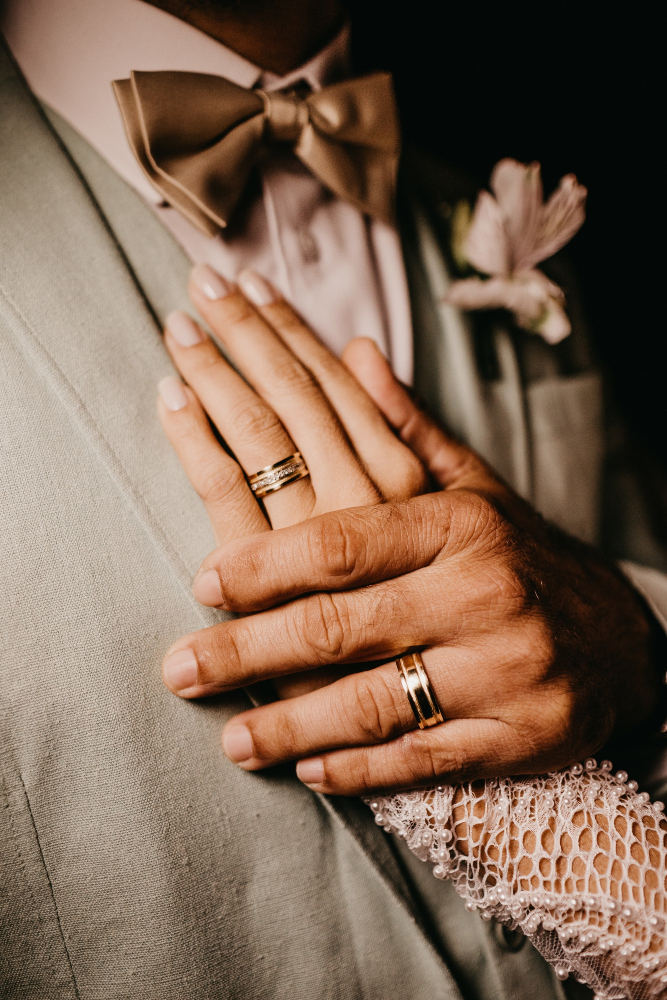The wedding ring has been symbolic of love, commitment, and the joining of two people together since ancient times. Simple bands with profound meaning convey this respect: a dedication to look after and take care of one another throughout life’s variety of challenges and joys. While both their design and meaning may have changed over the centuries, the intrinsic meaning of wedding rings remained the same. This paper elaborates on the history rooted behind the marriage ring, alongside cultural considerations when exploring today’s contemporary trends and their emotional effects.
History of the Wedding Ring
Exchanging wedding rings can be traced thousands of years back in history. It has been said that ancient Egyptians were one of the first to use rings as a symbol for eternal love. These ancient Egyptians took reeds and braided them into rings, which they would then wear on the fourth finger of the left hand. This was very significant since they believed this finger held the “vena amoris,” or vein of love, which ran directly to the heart.
Later, the custom was adopted by the Romans, who used to seal the bond of marriage by using iron rings to indicate strength and marriage permanence. With time, gold and other metals became what people used as wedding rings. This not only symbolized durability but the richness and social status of the owner as well.
In the Middle Ages, the ring exchange became officially part of a Christian wedding ceremony, wherein marrying partners sealed their bond as blessed by God. The custom swept through Europe to reach as far as other parts of the world, taking on the various customs and beliefs of each culture.
Cultural Significance
Wedding rings have various meanings and practices attached to them across cultures. In most Western cultures, exchanging wedding rings is a practice symbolized to mean eternal love and commitment towards each other. Since the ring is circular, with no beginning or end, it is therefore symbolic of eternity.
In Jewish weddings, the ring needs to be a plain, unadorned band. It does this to express, in as stern a form as possible, the purity and simplicity of the marriage covenant. Further, the groom places the ring on the right index finger of the bride during the ceremony, even though it is often moved to the left ring finger afterward.
Ring exchange is comparatively a very modern addition to the weddings of Hindus and is actually under the influence of the West. However, “mangalsutra”—a black-beaded necklace with gold—is a traditional marriage sign worn by the bride.
Although in some Asian cultures, such as the Chinese and Japanese, it has also become quite modern to wear wedding rings, especially in recent times, through the influences of Western society, traditional symbols, like the Chinese “double happiness” character and the Japanese “mizuhiki” knot, were harnessed as representations of marriage or love.
Trends in Wedding Rings Today
While the traditional plain gold band is still very popular, modern trends in wedding rings show a leaning toward more personalized and unique designs.
1. Alternative Metals
Today’s couples dabble with different metals other than traditional gold and platinum. Such metals include titanium, tungsten, and palladium, which happen to be strong and sleek. Rose gold, because of its blush pink hue, also becomes very well-liked due to its romantic association.
2. Custom Designs
A custom-designed wedding ring might be such a unique token of love that women create. The design jewelers offer bespoke services to choose materials and gemstones in respect of their personal taste and the telling of it. Much like engravings of meaningful dates, initials, or messages inside the band, which simply add an extra special touch.
3. Mixed Metals
Combining metals in one ring can be very distinctive. For example, white gold and rose gold make a band that could produce a striking contrast, giving any normal design a modern touch.
4. Vintage and Antique Rings
One may also like such rings for their authentic, therefore original, historical value. That is usually a ring that bears complex details and mounting of a nature sometimes found impossible to be replicated in modern designs. Other buyers appreciate the character and charm an older piece conveys.
5. Eco-Friendly and Ethical Choices
With the increase in ethical and environmental awareness, an increasing number of couples seem to prefer wedding rings made from recycled metals and diamonds that are not associated with conflicts. However, their sustainable materials could be made cyclically responsible by some specialized jewelers.
The Emotional Impact of Wedding Rings
The wedding ring thus encompasses much more emotional value than what it is physically made of. These rings remind one of the vows made on the wedding day and serve as a means to express further dedication and love in a relationship. They are thus worn every day, and this visibly symbolizes to others the attachment between two people.
Many remember very vividly the procedure for selecting wedding rings. It requires taste complementation, discussion of options, and finally, a decision as partners. Such teamwork in the resolution of the issue may draw the couple closer and create many unforgettable memories.
Moreover, most of the time, wedding rings are passed on from one generation to another within a family. They carry in them the saga and account of the people who have worn them earlier, giving a time dimension to the Couple’s own story.
Conclusion
Wedding rings have been timeless symbols of love and commitment; however their type has evolved over time and with different tastes and cultural influences. From their ancient origins and modern designs, these rings would remain deeply significant for couples across the world. It could be made from traditional gold, embellished with unusual gemstones, or personalized through engravings; wedding rings are kitschy reminders of the institution called marriage. Through these rings, they express not only their love from the present moment but also take part in tradition, symbolizing their pledge for a shared future.
